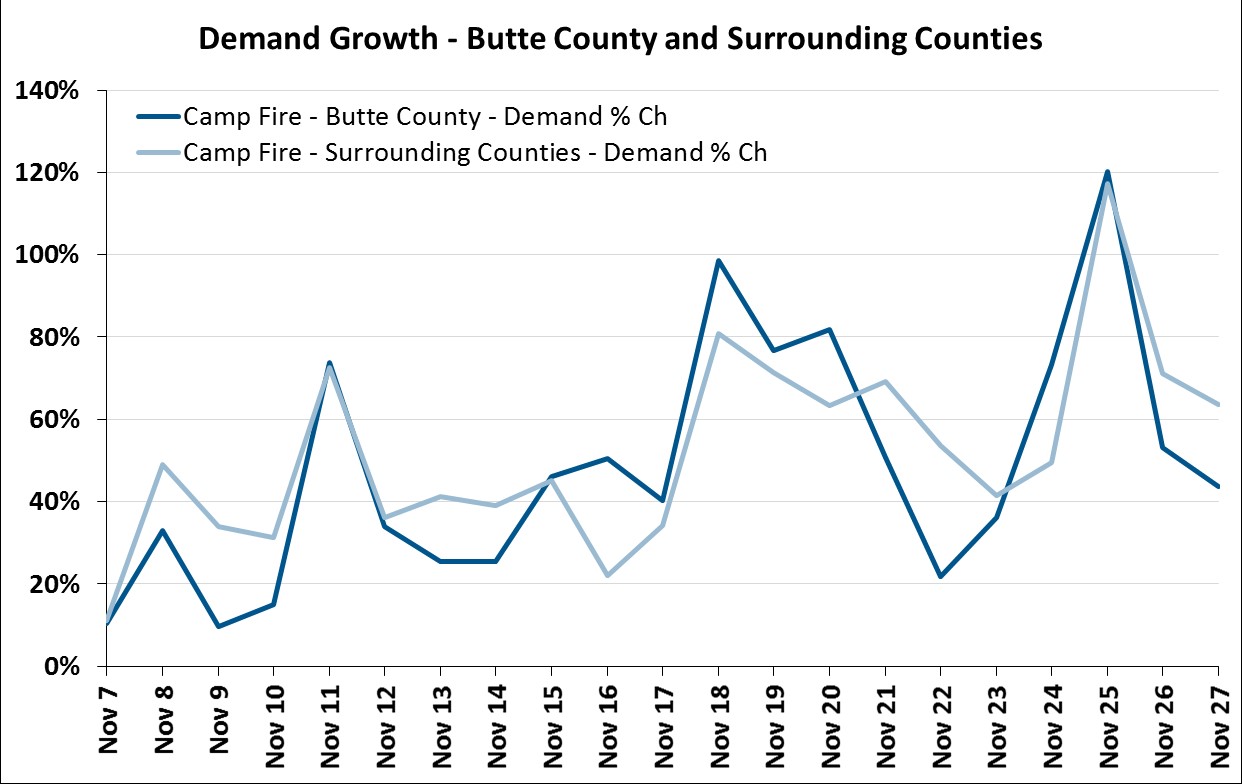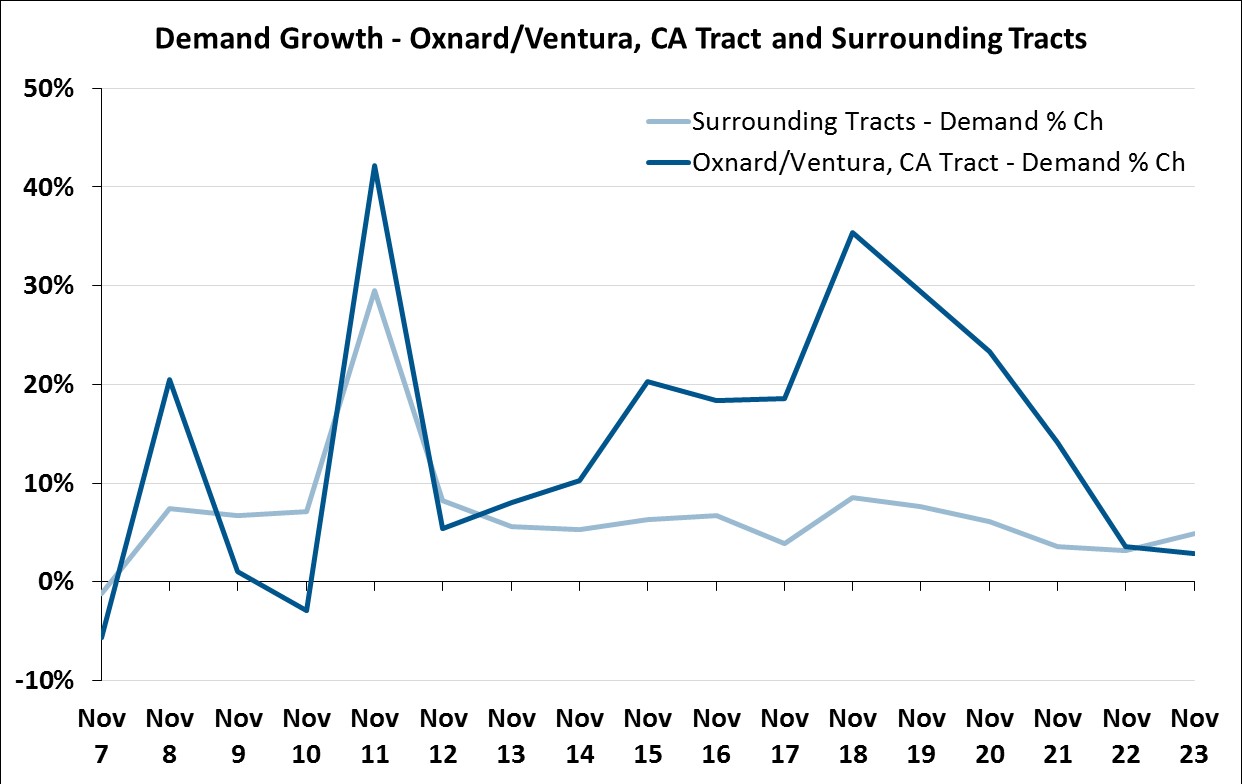Summary:
- This year's wildfire season has been the most destructive and deadly on record in California with reports of 8,434 fires burning across an area of 1,890,438 acres;
- The disaster relief effort has resulted in a significant uplift in hotel demand in wildfire-affected areas of California, according to new data from STR;
- It specifically highlights Butte County and the Oxnard/Ventura submarket for their levels of year-on-year demand growth in Nov-2018.
In mid-Jul-2018 to Aug-2018, a series of large wildfires erupted across California, mostly in the northern part of the state, including the destructive Carr Fire and the Mendocino Complex Fire. On 04-Aug-2018, a national disaster was declared in Northern California, due to the extensive wildfires burning there.
In Nov-2018, strong winds caused another round of large, destructive fires to erupt across the state. This new batch of wildfires included the Woolsey Fire and the Camp Fire, the latter of which killed at least 85 people and destroyed more than 18,000 structures, becoming both California's deadliest and most destructive wildfire on record.
The insurance industry is bracing for payouts exceeding last year's record USD11.8 billion payments to Northern California fire victims and prompt insurers to raise premiums or decline to sell policies entirely to homes in high-risk areas across the State.
The disaster relief effort has resulted in a significant uplift in hotel demand in wildfire-affected areas of California, specifically Butte County and the Oxnard/Ventura submarket, according to new data from STR's Consulting & Analytics office. "The hotel performance impact has been stronger in the areas around the Camp Fire, and that is largely due to market structure," explains Hannah Smith, a consultant at the benchmarking specialist.
"Butte County, and the surrounding counties affected by the Camp Fire, account for just 94 hotels and 4,810 rooms. Roughly 75% of that supply is classified in the midscale or economy segments, which are much more likely to accommodate longer-term, disaster-related demand. For comparison, the Oxnard/Ventura submarket and its surrounding areas comprise 40,950 rooms across 420 hotels. Only 28% of that supply is in those midscale and economy classes, while more than 45% is classified as upper upscale or luxury," she says.
CHART - Between 7-27-Nov-2018, Butte County reported a +43.3% increase in demand (room nights sold) when compared with the same days in 2017 Source: STR
Source: STR
STR's data shows that from 7-27-Nov-2018, Butte County reported a +43.3% increase in demand (room nights sold) when compared with the same days in 2017. As a result, occupancy jumped to 85.6%, and average daily rate (ADR) grew to USD102.49. The county's peak demand increase occurred on 25-Nov-2018, highlights STR, as demand grew +120.1% year over year on the Sunday that followed Thanksgiving.
The hotel performance impact during the first week of the Woolsey Fire was more widespread across the region, notes STR. During the second week of the wildfire, however, the impact became most concentrated in the Oxford/Ventura submarket, it says. From 7-23-Nov-2018, a +12.4% lift in demand pushed a +12.4% increase in occupancy to 81.9% and an +8.0% lift in ADR to USD145.05. During the same time period, noticeable demand increases were also seen in other STR submarkets such as Santa Monica/Marina Del Rey (+9.3%), Los Angeles North (+8.9%) and Hollywood/Beverly Hills (+3.6%).
CHART - The impact of the Woolsey Fire became most concentrated in the Oxford/Ventura submarket with a +12.4% lift in demand and occupancy Source: STR
Source: STR